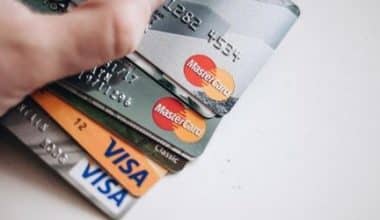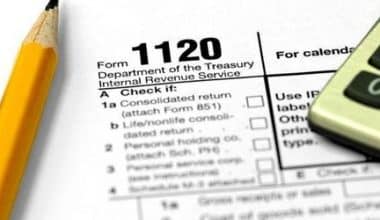Have you noticed any indications that it’s time to open a new bank account or switch banks? Perhaps you want a higher interest rate. If you’re moving, you might want to find a bank that has more branches in your new neighborhood. Perhaps you’re tired of poor customer service and want to take your business elsewhere.
Switching banks doesn’t have to be difficult, regardless of the reason. Continue reading for a step-by-step guide to moving your checking or savings accounts to a new banking organization.
Five Reasons You Might Want To Switch Banks
#1. You’re relocating to a new location
If you prefer to visit the bank in person or just do not want to pay ATM fees, you may need to switch banks if you relocate to a new city. In certain cases, popular bank branches are sparse or nonexistent in other cities.
#2. You are establishing a new joint account.
If you marry or create a domestic partnership, you should consider opening a joint account with your spouse. If you and your partner use separate banks, at least one of you will have to switch. The same is true when two people wish to consolidate their finances into a joint account.
#3. You’re Tired of Paying Exorbitant Fees
Some banks charge more fees than others, particularly if you don’t have a large amount. There’s no reason to put up with monthly maintenance costs or low balance fees when you can usually locate a bank that doesn’t, at least for certain sorts of accounts.
#4. Inadequate Customer Service
A pattern of unpleasant contact with customer service can be aggravating, especially if you prefer a human touch on your hard-earned money. Perhaps your bank is reducing the number of hours its local branches are open. Again, there’s no reason to put up with this when you have other options.
#5. Another bank has better interest rates.
Previously, checking accounts did not pay interest, and savings accounts offered relatively minuscule rates, such as 0.2 percent. Even your checking account might now pay interest if you obtain the correct type of account. If you’re not getting compensated to lend money to the bank (which is what you’re doing when you put money into your account), you might consider moving your money elsewhere.
How To Switch Banks
#1. Locate a Bank
Before you can switch banks, you must first select where you want your money to go. In general, you have the option of using a regular bank, a credit union, or an online bank.
With so many alternatives for creating a new account, having a checklist of items to look for when comparing banks is useful. When looking for a new bank, the following factors can assist you make a decision:
- You require or desire features and perks such as automatic bill payment or mobile check deposit.
- Fees charged by each bank
- Interest rates on savings are available.
- Services for online and mobile banking
- ATM and branch locations
- Additional features or benefits (for example, certain banks and credit unions make it simple to automatically keep your spare change)
Consider different banks’ minimum initial deposits and minimum balance requirements. For example, one bank may not require a minimum deposit to start an account, whilst another may require a greater deposit.
You could also wonder if you can switch banks and get paid for your efforts. Some banks offer bonuses that allow you to earn a reward for creating a new account in order to entice consumers to switch.
Also, keep in mind that you are not limited to one bank. To better meet your needs, you could create multiple checking or savings accounts at different banks.
#2. Keep a record of all of your automatic payments and deposits.
Bill payments, direct deposits, and recurring transfers can all help to streamline your financial life. When switching banks, it’s critical to ensure that these transactions are properly transferred to your new accounts.
For example, if your paychecks are still being transferred to your old account or you have an automated bill payment set up for a closed account, you may have difficulties. You’d also need to switch banks if you get Social Security benefits via direct deposit.
Make a list of the following items as you intend to switch banks:
- Automatic Deposits: Direct deposit of salaries or business income, alimony or child support payments, government benefit payments, and recurring transfers from connected bank accounts are all examples of this.
- Automatic bill payments. This includes mortgage payments, utility bills, credit card bills, and student loan payments.
- Recurring subscription payments. This covers streaming services, gym subscriptions, and other automatic payments.
- Regular transfers. Transfers to externally connected deposit accounts, retirement accounts, and investment accounts are all included.
You should also keep track of any online accounts to which your present bank accounts are linked. For example, if you shop online using a mobile wallet app, you’ll need to change your bank account or debit card details once your new account is activated.
Turn off any alert services or notifications you have with your current bank. Also, if you use paper checks and have them set to auto-refill, you must cancel those as well. However, do not close your account just yet. You’ll still need it to set up your new account.
#3. Establish a New Bank Account
You can open your new account once you’ve decided on a bank. Many banks now allow you to open accounts online, making switching banks the simplest option. If you’re starting out with a traditional bank or credit union, Instead, if you prefer a more customized experience, you might open an account at a branch or possibly over the phone.
To open a new bank account, you’ll typically need to provide the bank with your:
- Name and birthdate
- Social security number
- The email address
- Phone number
- Mailing address
- Driver’s license or other form of identification
If you wish to switch banks online, you must also inform the bank about how you intend to fund your new account. You’ll need to offer the new bank your current bank’s account number and routing information.
Keep in mind that before you may transfer funds, certain online banks may want you to verify deposit information from a linked account. The bank will make one or two small test deposits into your account. Once you’ve confirmed them, you can link your old and new accounts to complete the transfer.
If you want to start an account in person, you can make your initial deposit using cash from your current account. If you need to deposit a greater sum, you can use a certified check or cashier’s check.
#4. Sign up for online and mobile banking.
You’ve opened a new bank account, but you don’t know how to access it. This is the time to consider joining up for online and mobile banking—these are often the only alternatives available if you want to bank with an online-only organization.
Your bank or credit union can assist you in setting up online banking. You may be required to enroll before accessing this service. After that, go to your bank’s website, create a user ID and password, and log in to verify your account.
After that, you can get your new bank’s mobile app. You should be able to use the same user ID and password for both mobile and online banking. To use online or mobile banking capabilities, you may need to set up multi-factor authentication or authenticate your account via email or text, depending on the bank.
#5. Make any necessary changes to your automatic payments and deposits.
After you’ve opened your new account, you’ll need to do a little more work to completely switch banks. This is the time to transfer all of your automatic payments and deposits.
Before you do so, go back over your list and see if there are any regular deposits or payments you wish to cancel completely. For example, if you have a regular subscription to a streaming service that you no longer use, switching banks may be an excellent time to cancel it entirely.
You can change your account details once you know what you want to transfer and what you want to cancel:
- Begin by making direct deposits. If you have direct deposit set up at work for child support, alimony, or government benefits, you must update your bank account information with each one separately. To change banks, for example, you’d need to adjust Social Security direct deposit by going into your Social Security account online.
- Rearrange your automatic bill payments. Set your new bank account up for automatic bill payments. Alternatively, if you have set up automatic payments with certain billers, make sure to update your details for each one.
- Make recurring transfers. You’ll need to configure any recurring transfers, such as deposits from checking to savings, to occur between your new accounts.
Other minor activities to complete before switching banks include ordering new checks if you use paper checks, setting up a new safety deposit box, and updating your mobile wallet payment data.
It’s still a smart idea to keep some money in your old account until all of your automated payments and deposits have been transferred over. Leaving the account open for at least one complete billing cycle after switching banks might help you identify any missed recurring payments or transactions.
#6. Deactivate Your Old Bank Account
When you’re certain that all of your automatic transactions have been migrated to your new account, the next step is to close your old bank account. You may be able to accomplish this in person, online, or over the phone, depending on the bank.
When canceling a bank account, request written confirmation that it has been closed. You should keep this in case your former bank permits a deposit or debit transaction to go through that results in fees. Also, inquire about any account closing fees. Some banks impose a fee if an account is closed within a particular time limit after it is opened.
You should throw away any leftover paper checks for the account, as well as your debit card. When you receive your final statement from your former bank, carefully analyze it to ensure there are no outstanding payments or deposits to transfer.
Possible Difficulties When Switching Banks
Before making the switch, evaluate the potential negative consequences of moving your account and ensure you are prepared to deal with them.
Before you begin, ask yourself the following questions:
- How probable is it that you will forget to switch an automatic payment? How much would that set you back? Is the risk worthwhile? The longer you’ve had your current account, the more accounts and automatic payments may be tied to it, making switching more difficult.
- Will a hard credit draw be performed if I open a new account? If you’re in the process of applying for a mortgage or a car loan, you shouldn’t put your credit score at risk.
- Is the higher interest rate worth the hassle? If you’re moving your account to pursue a better interest rate, keep in mind that you’ll lose interest during the few days it takes for your money to transfer from the old account to the new one. Use an online interest rate chaser calculator to see if the new interest rate is high enough to justify the effort.
How Much Time Does It Take To Switch Banks?
The time it takes to switch banks is determined by several factors, including how long it takes to close your accounts at the previous bank, how long it takes to open a new bank account, and how long it takes to redirect all direct deposits and automatic bill payments to the new account.
If your account has no negative balance, outstanding or pending transactions, you may be allowed to close it right away. When transactions are in progress, an overdrawn balance must be reduced to a positive or zero balance, or there are bank or regulatory constraints that must be resolved, for example, an account closure may be postponed.
Opening a bank account online might take as little as 10 minutes. It may take longer to open an account in person at a bank location.
Is Switching Banks Bad for Your Credit?
In general, closing a bank account and starting a new one to switch banks has no effect on your credit. Bank accounts are not used to calculate credit scores and are not included in credit reports.
Conclusion
Switching banks requires some effort, but practically all of that effort may now be completed online. Typically, you will not be forced to wait on hold or visit the bank in person. The most difficult parts of the process are deciding on a new bank and remembering to switch all of your linked accounts. To be sure, it’s inconvenient, but it can improve your financial situation, and if you’re moving, it’s often a necessary evil. Whatever your motivation for transferring, switching banks allows you to get lower costs, higher interest rates, and superior customer service.
- SWITCH CAR INSURANCE: Best Car Insurance and How to Switch It
- BEST BANK FOR SMALL BUSINESS IN 2023
- SWITCHING COSTS: Definition, Strategies, and Examples






